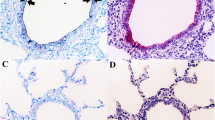Abstract
Fluorescence emitted by individual cells of severalTrichomonas vaginalis strains, nearly all of which were cloned, incubated with fluorescein-conjugated lectins in the absence (experimental) or presence (control) of inhibitory sugars, or else in phosphate-buffered saline alone (autofluorescence) was measured with a Leitz MPV Compact microfluorometer. Irrespective of whether the organisms were postfixed in formalin or glutaraldehyde, the relative fluorescence emitted by the cells was closely comparable, provided that appropriate neutral density filters were employed. However, autofluorescence was much higher for glutaraldehyde-fixed trichomonads. Therefore, although better preserved and more amenable to subsequent manipulations, such organisms were found unsuitable for use in “qualitative” titration of the fluorescence emitted by various strains. Provided that the necessary precautions were taken, comparable fluorescence readings were obtained with trichomonads affixed to glass slides by heat (41° C, on a section spreader) or by a cytologic centrifuge (Cytospin 2). Large numbers of concanavalin A (Con A)-binding sites were present on organisms of all strains, irrespective of their virulence for human patients and as estimated by the subcutaneous mouse assay; these sites were shown with the aid ofd-mannose to be mannose or mannose-related residues. More binding sites for soybean agglutinin (SBA) were found on the virulent than on avirulent strains. On the basis of inhibition experiments, the sugar residues mainly responsible for these differences appeared to bed-lactose residues. Similar differences were observed withRicinus communis agglutinin Type I (RCA I), for whichd-galactose was employed as the competing sugar. However, with two cloned strains the situation with regard to RCA I binding was reversed — more of the lectin bound to a mild than to a virulent strain. The results obtained withRicinus communis Type II agglutinin (RCA II) were often similar to those noted for RCA I; however, in most instances the inhibition withN-acetyl-d-galactosamine (GalNAc) was lower. Furthermore, the results noted with the GalNAc-specific agglutinins fromDolichus biflorus andHelix pomatia suggested that only very few GalNAc residues were available for binding on the surfaces of allT. vaginalis strains examined in the course of this study. Statistical analyses of fluorescence emitted by four clones of each, Balt 42 (virulent) and JH31A (avirulent)T. vaginalis strain upon incubation with Con A and SBA revealed homogeneity of these strains with regard to the number of the specific surface saccharide residuesd-mannose andd-lactose. To render the lectin assay applicable to routine virulence evaluation ofT. vaginalis strains, fluorescence of virulent and avirulent strains was examined visually after incubation of these strains with SBA at concentrations ranging from 50 μg to 1 μg. Differences in virulence were reflected in the SBA titers characteristics of the several strains tested.
Similar content being viewed by others
References
Basu S, Basu M (1982) Expression of glycosphingolipid glycosyl transferases in development and transformation. In: Horowitz MI (ed) The glycoconjugates. Academic Press, New York, pp 265–285
Beyer TA, Hill RL (1982) Glycosylation pathways in the biosynthesis of nonreducing terminal sequences in oligosaccharides of glycoproteins. In: Horowitz MI (ed) The glycoconjugates. Academic Press, New York, pp 25–45
Choromański L, Honigberg BM, Honhon P-M (1984)Trypanosoma (Nannomonas) congolense: analysis, by fluorescein-conjugated plant lectins, of surface saccharides of cloned variant antigen types differing in infectivity for mice. J Parasitol 70:634–643
Honigberg BM (1961) Comparative pathogenicity ofTrichomonas vaginalis andTrichomonas gallinae to mice. I. Gross pathology, quantitative evaluation of virulence, and some factors affecting pathogencity. J Parasitol 47:545–571
Honigberg BM (1978) Trichomonads of importance to human medicine. In: Kreier JP (ed) Parasitic protozoa. Academic Press, New York, San Francisco, London, vol 2: 275–454
Honigberg BM, Livingston MC, Frost JK (1966) Pathogenicity of fresh isolates ofTrichomonas vaginalis: the “mouse assay” versus clinical and pathologic findings. Acta Cytol 10:353–361
Honigberg BM, Gupta PK, Spence MR, Frost JK, Kuczyńska K, Choromańsk L, Wartoón A (1984) Pathogenicity ofTrichomonas vaginalis: cytopathologic and histopathologic changes of the cervical epithelim. Obstet Gynecol 64:179–184
Kuczyńska K, Chromański L, Honigberg BM (1984) Comparisoin of virulence of clones to twoTrichononas vaginalis strains by the subcutaneous mouse assay. Z Parasitenkd 70:141–146
Kulda J, Honigberg BM, Frost JK, Hollander DH (1970) Pathogenicity ofTrichomonas vaginalis. Am J Obstet Gynecol 108:908–913
Kulda J, Zavadil, M, Vojtěchovská M, Dohnalová M, Karásková J, Kuncová E (1977) Comparison of the pathogenicity ofTrichomonas vaginalis for natural and experimental host. Coll Abst Cong with Int Particip on Trichomoniasis Brastislava, p 58
McEntegart MG (1952) The application of haemagglutination technique to the study ofTrichomonas vaginalis infection. J Clin Pathol 5:278–280
Su-Lin K-E, Honigberg BM (1983) Antigenic analysis ofTrichomonas vaginalis strains by the quantitative fluorescent antibody methods. Z Parasitenkd 69:161–181
Wartoń A, Honigberg BM (1980) Analysis of plant lectins of surface saccharides ofTrichomonas vaginalis strains which differ in pathogenicity. J Protozool 27:410–419
Wartoń A, Honigberg BM (1983) Analysis of surface saccharides inTrichomonas vaginalis strains with various pathogenicity levels by fluorescein-conjugated plant lectins. Z Parasitenkd 69:149–159
Author information
Authors and Affiliations
Rights and permissions
About this article
Cite this article
Choromański, L., Beat, D.A., Nordin, J.H. et al. Further studies on the surface saccharides inTrichomonas vaginalis strains by fluorescein-conjugated lectins. Z. Parasitenkd. 71, 443–458 (1985). https://doi.org/10.1007/BF00928347
Accepted:
Issue Date:
DOI: https://doi.org/10.1007/BF00928347




